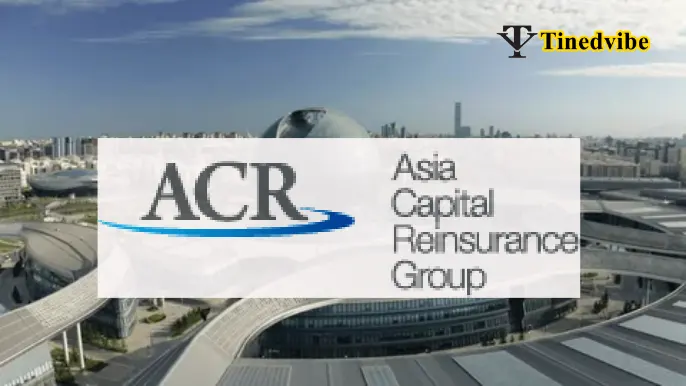Today, we will take a deep dive into the subject of Structured Annuity Settlements in the Law ecosystem and what its all about. We will also examine advantages and disadvantages

Structured annuity settlements are a popular option for personal injury claimants who receive a large settlement payout. Instead of receiving a lump sum, the claimant receives a stream of payments over a period of time. In this blog post, we will discuss the benefits and drawbacks of structured annuity settlements, how they work, and what factors to consider when deciding whether to choose a structured settlement or a lump sum payout.
Structured settlements are simple. Many civil lawsuits result in someone or some company paying money to another to right a wrong. Those responsible for the wrong may agree to the settlement on their own, or they may be forced to pay the money when they lose the case in court
If the amount of money is small enough, the wronged party may have the option to receive a lump sum settlement. For larger sums, however, a structured settlement annuity may be arranged.
In this case, the at-fault party puts the money toward an annuity, which is a financial product that guarantees regular payments over time from an insurance company.
The agreement details the series of payments the person who was wronged will receive as compensation for the harm done to them. Spreading the money over a longer period of time offers a better future guarantee of financial security because a single payout can be spent quickly.
History of Structured Annuity Settlements in the U.S.
The U.S. has a rich history of structured settlements, but that wasn’t always true. Modern adoption of these payments can be traced back to Canada in the 1960s when a medication called thalidomide caused birth defects in thousands of children. Rather than receive a one-time payment from the at-fault pharmaceutical company, the claimants needed a series of payments over a longer timespan to cover future medical bills.
Structured settlements were first issued in the U.S. in the 1970s when similar cases arose. In that decade, the IRS Revenue Ruling 79-220 that was issued in 1979 provided tax benefits for the recipient, citing, “The taxpayer’s only right with respect to the amount invested was to receive the monthly payments, and the ruling concluded that the taxpayer did not have actual or constructive receipt or economic benefit of the amount invested.”
Settlement payments to the injured party did not count towards their gross income, and thus they were not required to pay taxes on any money received. Likewise, after the recipient passed away, payments to the estate continue to be excluded from taxation.
Structured settlements gained popularity in the 1980s after the U.S. Congress passed the Periodic Payment Settlement Act of 1982. The act served as the federal government’s buy-in with the IRS ruling and extended restrictions to the state governments, barring them from taxing structured settlement income from personal injury cases.
By 1985, the National Structured Settlements Trade Association formed to preserve and promote structured settlements to injury claimants through education and advocacy.
Over a decade later, the Small Business Job Protection Act of 1996 set limitations on the types of personal damage cases eligible to receive the tax benefits. As a result of this act, only damages from “personal physical injuries or physical sickness” can exclude payments from gross income. Payments from punitive damages were no longer eligible for tax exclusions.
Today, structured settlements remain a trusted source of financial security, with an estimated $10 billion annual payments issued to over 30,000 recipients. Now, it’s become commonplace for the claimants to choose a preference for periodic payments, a one-time lump-sum payout, or a blend of both.
How Do Structured Annuity Settlements Work?
Legal settlements can be paid out in a one-time lump sum or through a structured settlement where periodic payments are made through a financial product known as an annuity. The key differences between these settlement options are in the areas of long-term financial security and taxes.
When a plaintiff receives a settlement through a one-time lump sum, they might spend it too quickly, robbing them of the long-term financial security that future payments could provide.
Moreover, any interest and dividends earned if the lump-sum were to be invested would be subject to taxes. Conversely, an annuity is meant to provide income throughout the recipient’s lifetime, and any interest and taxes earned through the annuity will grow tax-free.
Types of Structured Settlement Cases
There are a number of reasons why an individual may receive a structured settlement. The most common cases include:
The most common cases are:
Structured settlements — or structured annuities — are both financial products and legal judgments. While they function somewhat like private assets, they are also subject to complex regulations.
Legal Structure: Assigned vs. Unassigned Cases
An assigned case is a qualified case, meaning the settlement proceeds qualify for tax benefits, and the defendant’s payment obligation must align with Internal Revenue Code provisions. In assigned cases, a third-party assignment company collects the funds from the defendant, and then purchases the annuity from a different insurance company. That annuity will fund the periodic payments directly to the claimant. The claimant, or plaintiff, does not control the annuity contract.
Conversely, in an unassigned case, the defendant is a property and casualty insurance company that purchases the annuity from a separate life insurance company. The defendant technically owns the annuity, and they name the injured party as the payee.
Learn about the process of being awarded a structured settlement annuity as well as the legal protections and advantages on the following pages:
Payout Options for Structured Settlements
If you elect to receive your lawsuit payout through a structured settlement, you can determine whether to begin to receive the funds immediately or at a later date. Immediate payments can be beneficial if you require medical care, for example, or have lost your source of income. You may decide to postpone the payments until a later time, such as after you retire. During the waiting period, the annuity will grow as it earns interest.
You can also determine whether the annuity should be paid for the rest of your life, no matter how long that may be, or for a specified number of years, as well as the schedule for receiving payments and the payment amounts and adjustments.
Often, plaintiffs will need money for a variety of expenses before they receive their settlement. If you find your expenses mounting as you await your first structured settlement payment or initial lump sum, you may want to consider pre-settlement funding options to tide you over.
Advantages of Structured Annuity Settlements
One of the biggest advantages of a structured annuity settlement is that it provides a guaranteed income stream for the claimant. This can be particularly beneficial for those who have suffered a serious injury and are unable to work or earn a steady income. The payments can be tailored to meet the claimant’s specific needs and can be scheduled to start immediately or at a later date.
Another advantage is that structured settlements are tax-free. The IRS does not consider structured settlement payments to be income, so they are not subject to federal or state income taxes. This can be a significant financial advantage for the claimant, as it can help them avoid a large tax bill and preserve more of their settlement funds over time.
Finally, structured settlements can provide peace of mind for the claimant and their family, as they offer a predictable and stable source of income. This can help alleviate some of the stress and uncertainty that often comes with a large settlement payout.
Disadvantages of Structured Annuity Settlements
One of the main drawbacks of structured settlements is that they are inflexible. Once the terms of the settlement are agreed upon, they cannot be changed. This means that if the claimant’s financial situation changes, they may not be able to access the full amount of their settlement funds when they need them.
Another potential disadvantage is that structured settlements may not provide as much financial flexibility or opportunity for growth as a lump sum payout. With a lump sum, the claimant has the freedom to invest their funds as they see fit and potentially earn a higher return on their investment.
SEE ALSO:
Quickest way to Immigrate to Canada as a Civil Engineer In 2023/2024
Quickest way to Immigrate to Canada as a Tailor In 2023/2024
Quickest way to Immigrate to Canada as a Hairdresser In 2023/2024
About Accelerated Healthcare Administration Degree Programs and Industry Salary 2023/2024
About Accelerated Health Science Degree Programs and Industry Salary 2023/2024
About Accelerated Emergency Management Degree Programs and Industry Salary 2023/2024
How to Immigrate to UK as a Truck Driver 2023/2024
How to easily Apply for Canada Student Visa in Nigeria
How to Relocate to Canada with your Family
University of Leeds Accounting And Finance Department Scholarship 2023/2024 in UK







Leave a Reply